![]()
![]()
![]()
Use LEFT and RIGHT arrow keys to navigate between flashcards;
Use UP and DOWN arrow keys to flip the card;
H to show hint;
A reads text to speech;
34 Cards in this Set
- Front
- Back
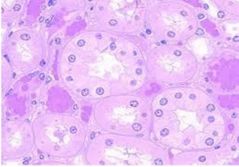
Name the organ and what type of cells |
Kidney; simple cuboidal epithelium |
|
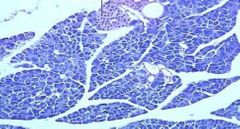
Name the Organ and name what is pointed by the arrow |
Pancreas; Islet |
|
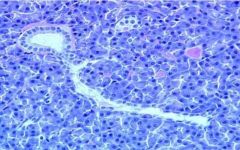
Name the organ and what type of cells |
Pancreas: simple cuboidal epithelium |
|
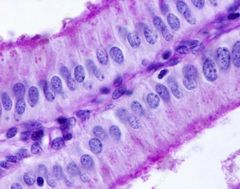
Name the organ and what type of cells |
Gall bladder; simple columnar epithelium |
|

Name the organ What type of cell Label the parts (arrow) |
Small Intestine Simple columnar epithelium Goblet cells Brush border |
|
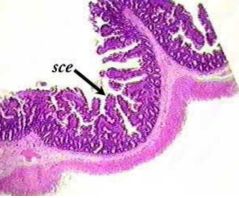
What organ and what type of cell |
Small intestine, simple columnar epithelium |
|
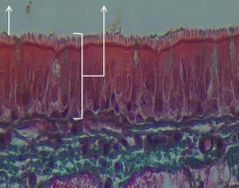
What organ What type of cells Label the parts with arrow |
Trachea Pseudostratified ciliated columnar epithelium Cilia Pseudostratified ciliated columnar epithelium |
|
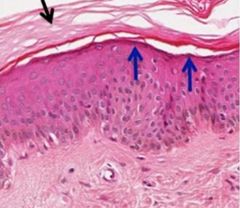
What organ What type of cell Label what is being pointed by the black arrow |
Skin Stratified squamous keratinized Epithelium Keratinization |
|
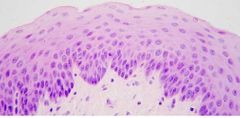
What organ What type of cell |
Esophagus Stratified squamous non-keratinized Epithelium |
|
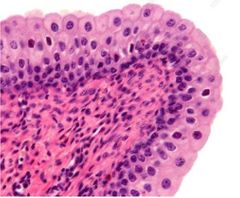
What organ What type of cell |
Urinary bladder Transitional epithelium (urothelium) |
|
|
Intermediate type that appears stratified but really is one cell layer thick |
Pseudostratified Epithelia |
|
|
A layer or sheet of cells that covers a surface or lines a cavity |
Epithelium |
|
|
one cell layer thick |
Simple epithelia |
|
|
two cell layer thick or more layer |
stratified epithelia |
|
|
lines the cavities in the urinary tract, which may be distensed, and the thickness of the epithelium varies with the degree of distention |
Transitional Epithelia |
|
|
non-cellular structure found beneath the epithelial cell layer |
Basal lamina |
|
|
receives and stores bile from the liver via the hepatic duct and then cystic duct |
Gall bladder |
|
|
how much bile can be store in human |
50 to 100 mL |
|
|
attached to the visceral layer of the liver |
Gall bladder |
|
|
the inside of this is folded and covered by millions of tiny projections called villi |
Small Intestine |
|
|
Kidney cell shape and cell layer |
simple cuboidal |
|
|
Gall bladder cell shape and cell layer |
simple columnar |
|
|
Pancreas |
simple cuboidal |
|
|
Small Intestine |
simple columnar |
|
|
Trachea cell shape and cell layer |
pseudostratified columnar epithelium |
|
|
Esophagus cell shape and cell layer |
Stratified squamous non-keratinized epithelium |
|
|
Mouth cell shape and cell layer |
Stratified squamous non-keratinized epithelium |
|
|
Vagina cell shape and cell layer |
Stratified squamous non-keratinized epithelium |
|
|
Epidermis cell layer and cell shape |
Stratified squamous keratinized epithelium |
|
|
Urinary Bladder cell shape and cell type |
Transitional epithelium (Urothelium) |
|
|
The superficial layer showslarge cells with big nuclei and a rounded apical surface |
Urinary bladder; Transitional epithelium (Urothelium) |
|
|
when the bladder is empty the it is said to be in ___state and the shape of the cell is ________ |
contracted; dome-shape |
|
|
The urothelium transforms from _____ cell layers thick in a __________ to ________ cell layers thick in a ________bladder. |
five to seven; relaxed state two or three ;distended bladder. |
|
|
specialized for the synthesis and secretion of mucus and involved with immunoregulation; arise from pluripotent stem cells |
Goblet cells |

